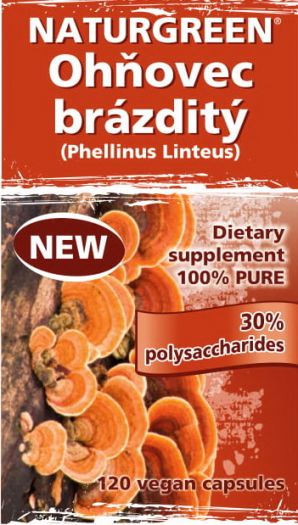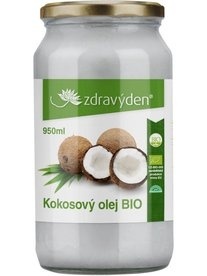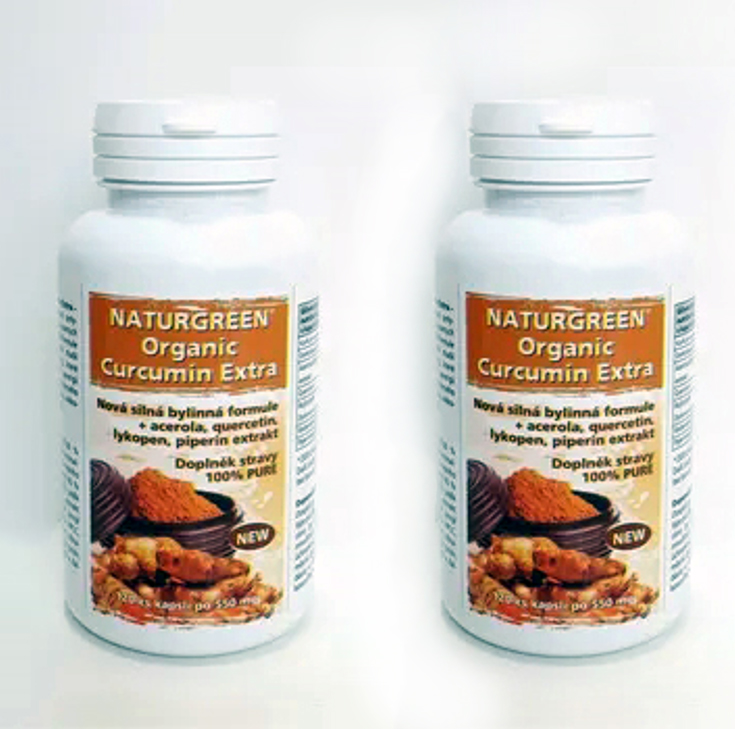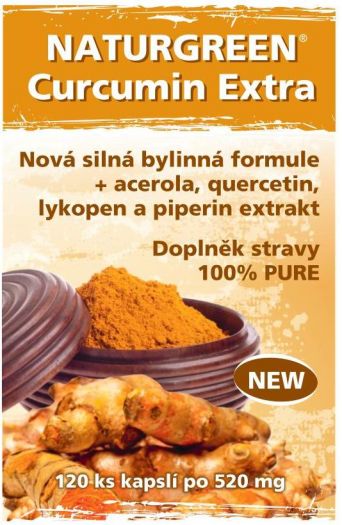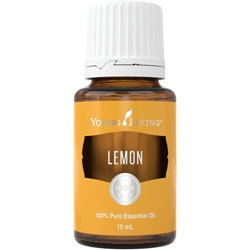Úvod »NAŠI DODAVATELÉ»Naturgreen » Naturgreen Ohňovec brázditý (Phellinus Linteus) 120 kaps
Ohňovec brázditý (Phellinus Linteus)
Novinka jedinečný originál na trhu Ohňovec brázditý extrakt s 30 % polysacharidy v originálním složení.
100% čistý a originální výrobek bez pojiv a éček či jiných substancí.
Díky svým magickým aktivním složkám jsou houby přirozeným ochráncem. Čínské jméno naší společnosti "益要圣" pochází z anglické "esence", což znamená, že se jedná o podstatu hub. Zaregistrovaná ochranná známka patentu "河南河阳" pochází z písemné práce "U učitele" Han Yu, která předpokládá, že houby přijímá člověk proto, aby byl vitalizující, energičtější a plný moudrosti.
Surovina pro náš výrobek pochází od našeho certifikovaného dodavatele hub, který je 3 největší pěstitel a zpracovatel hub v ČÍNĚ již po dobu 15 roků. Má dlouholeté zkušenosti v oblasti zpracování jedlých hub a získal značné zkušenosti a vynikající úspěchy, zejména v oblasti pokročilé fermentační techniky a extrakce a separace polysacharidů z jedlých hub.
Jeho kultivační základy se nacházejí především v horských oblastech a na horských pastvinách v provinciích Qinghai, Tibetu, Sichuan, Yunnan, Gansu a Guizhou.
Přesně tam se pěstují ty nejkvalitnější houby s vysokým obsahem a vyváženým poměrem všech účinných látek, určené k dalšímu zpracování.
Zařízení na zpracování polysacharidů našeho dodavatele jsou konstruovány přísně podle světových standardů GMP. Při výrobě polysacharidů či jiných účinných složek se systém HACCP používá společně se standardním nařízením o výrobě provedeným společností ESSE. Výroba probíhá podle certifikace systému ISO9001, ISO14000, OHSMS18000.
V tradiční čínské medicíně se Ohňovec brázditý kombinuje s Reishi nebo Maitake, protože jsou schopny vzájemně podporovat.
Medicinální houba
AN:Phellinus linteus standardized extract with 30% polysaccharides prepared by gentle extraction so that the body is able to absorb as many active substances as possible.
AN :To learn more about this product, you will be able to find out about everything that interests you about the product in question as a source of information on medicinal herbs and biological fiction
Just click on this link here Ohňovec brázditý Extrakt.
AN:Phellinus linteus (Phellinus linteus) is a wood-like fungus-like fungus, growing especially on mulberry, beech, oak and several conifers. The edges of the puppies are yellow in color and the whole is non-edible because it has a woody consistency. Frowning Firefighter grows very slowly and its cultivation under artificial conditions is very complicated. Therefore, along with Cordyceps sinensis and Reishi are among the rare mushrooms.
In traditional Chinese medicine, Phellinus linteus has a millenary tradition of treating diseases such as digestive problems, diarrhea, internal bleeding, and cancer. Local doctors and folk healers cure diarrhea, internal bleeding, vomiting and even cancer. The first scientific study of its healing effects came out in 1971, when the firefighter was scientifically researched for the first time by the Japanese scientist Sasaki, and since then his polysaccharides as well as low-molecular substances have been subjected to thorough research. In an effort to apply the traditional knowledge of this fungus to Western science standards, research begins in the 1980s and is more intense up to 20 years later. Researchers have gradually demonstrated the immunomodulatory and anti-tumor effects of the fungus. They have shown that P. linteus induces cellular disassembly (apoptosis) in many cancers without damaging normal tissues. Studies on antitumor activity and synergy with conventional cytostatics have gradually confirmed the status of the flame as a potent agent in the fight against cancer. Clinical experience with P. linteus is still increasing. In recent clinical trials, the flame extract was effective in prostate cancer and hepatocellular carcinoma with metastases in the lungs. Since the very beginning of the research, great attention has been paid to polysaccharides but, over time and new research, other new biologically active substances of this fungus and their pharmacological and toxicological effects are discovered and isolated by P. linteus.
Isolated polysaccharides have demonstrated immunomodulatory properties. Said polysaccharides are still supplemented with heteropolyglycans in the furnace. These are polysaccharides that are linked to a peptide group. In the peptide part we can find serine and threonine, which are immunostimulants.
Blood polysaccharides stimulate B-lymphocytes, stimulate and suppress, and suppress tumor growth and metastasis. They can stimulate B-lymphocytes and also have immunosuppressive effects that are likely to slow the growth of tumors. Also, the acidic heteropolyglycans in which the polysaccharide is bound to the peptide can also participate in the biological effect of polysaccharides of P. linteus. Their peptide moiety contains a large amount of serine and threonine and the compounds exhibit immunostimulatory activity. In studies, they were administered orally to mice with experimental arthritis, significantly suppressing the symptoms of the disease. P. linteus peptidoglycans stimulate B-lymphocyte activity and have anti-inflammatory effects. The polysaccharide components of the P. linteus flask also have other biological effects. E.g. mitigate the course of experimental shock in laboratory animals, or protect the liver from the hepatotoxic effect of tetrachloromethane and other hepatotoxins. The methanolic flax extract has antibacterial activity and is effective against resistant strains of Staphylococcus aureus.
Other substances found in the P. linteus flame are of interest, for example hispidine, which has strong antioxidant effects, or hispolone, which stops the proliferation of human epidermoid KB cells, lung carcinoma and gall bladder cells, prevents metastasis and also has analgesic effects. Another group of substances found in the P. Linteus Flame are furan derivatives of Phellinusfurans A and B that inhibit (diminish) the hemolytic activity of human serum. An important group of secondary metabolites of the flame are also antioxidant-active polyphenols. One of the last bioactive substances of the flame retardant is an anti-inflammatory inotilon. Clinical experience with P. linteus flares is increasing. In recent clinical trials, the flame extract was effective in prostate cancer and hepatocellular carcinoma with metastases in the lungs.
The extract from the furnace flame contains not only large molecules of polysaccharides and heteropolyglycans. Other substances found in the P. linteus flame are of interest, for example hispidine, which has strong antioxidant effects, or hispolone, which stops the proliferation of human epidermoid KB cells, lung carcinoma and gall bladder cells, prevents metastasis and also has analgesic effects. Other compounds inhibit the polypheresis of some cancer cells, and phellinone is a potent inhibitor of enoyl-ACP-reductase known gold staphylococcus (Staphylococcus aureus). Anti-oxidative activity also includes polyphenols and styrylpyrones, which are among the secondary metabolites of the pyloric pyruvate. Another group of substances found in the P. Linteus Flame are furan derivatives of Phellinusfurans A and B that inhibit (diminish) the hemolytic activity of human serum. An important group of secondary metabolites of the flame are also antioxidant-active polyphenols. One of the last biologically
Phellinus linteus- Ohňovec brázditý
AN composition: Phellinus Linteus extract of 30% polysaccharides. The extract has a standardized content of active substances. Cellulose capsule
|
AN: Capsule / Value Composition
|
1caps. contains |
|
Ohňovec brázditý (Phellinus Linteus ) |
320mg |
No daily volue established. Servings per container: 38.4 g / + -5%.
AN: recommended dosage: take 1-2 capsules twice a day, at least 20 minutes before a meal or 30 minutes after a meal. For better efficiency, drink warm water or tea.
Warning: keep out of reach of children. Do not take a supplement if you are under 18, pregnant or nursing a baby, or you have any known or suspected medical conditions. Store: Store in a cool and dry place. Keep away from direct sunlight and heat. Storage: store in cool and dry place and sealed packaging.Keep away from direct sunlight and heat.
AN :NOTICE : the EU / UK: this is the PNT food (novel food - new foods). Unlike those of the CIS countries, SNS ,RU ,RU, USA, CA, AU and other countries are not taking oral Phellinus linteus- Ohňovec plowing in CZ and EU countries not yet approved.
CZ: Důležité upozornění: Přestože se jedná podle FDA Úřadu pro kontrolu potravin a léčiv v USA (anglicky: Food and Drug Administration, FDA) o kvalitní a bezpečný produkt není Phellinus linteus- Ohňovec brázditý v CZ -EU státními úřady zatím schváleným doplňkem stravy.Jako nová potravina PNTnovel food ** čeká na schvalovací proces, který v EU díky administrativě může trvat delší dobu. Nemůžeme a nesmíme Vás nabádat k jeho užívání. Naše balení Phellinus linteus- Ohňovec brázditý pro orální použití je určeno výhradně pouze pro export SNS , RU , USA / CAN /AUS/ JPN/ RUS/ TWN/: kde se Phellinus linteus- Ohňovec brázditý může uživát
Co je to Novel Food?** Novel Food je definována jako potravina, která nebyla spotřebována do značné míry lidmi v Evropské unii před rokem 1997, kdy první nařízení EU o nových potravin vstoupila v platnost. "Novel Food" mohou být nově vyvinuté nebo inovační potraviny vyrobené za použití nových technologií a výrobních procesů, stejně jako jídlo tradičně vyrobené pouze mimo EU a čekající na schválení. Nové potraviny zahrnují výrobky , doplňky stravy nebo také nové zemědělské produkty ze třetích zemí.Definice EU zde
What is Novel Food?
Novel Food is defined as a food that has not been consumed to a large extent by people in the European Union before 1997, when the first EU food regulation came into force. "Novel Food" can be newly developed or innovative foods produced using new technologies and production processes, as well as food traditionally produced only outside the EU and pending approval. New foods include products, food supplements or new agricultural products from third countries. EU definitions here
AN Warning!
Package insert for product for export outside EU countries.
Use for EU / CZ: this is a novel food (NP). Unlike the USA, CAN, AUS, RU and other countries outside the EU, oral use of in the Czech Republic and EU countries is not yet approved. Novel foods (formerly called novel foods) or novel food ingredients of the new type (hereinafter referred to as "NP") are foods for which the history of consumption has not been documented before 15 May 1997, the date of entry into force of the EP and R Regulations (EC) No 258/1997 of 27 January 1997 concerning novel foods and novel food ingredients.
Použití pro Ohňovec brázditý (Phellinus linteus) v ČR a EU je možné pouze jako přirozené hnojivo pro pokojové rostliny. Polysacharidy a jiné látky obsažené v extraktu z hub mají jedinečnou vysokou biologickou aktivitu a mohou stimulovat produkci „nespecifických“ účinných faktorů v rostlinách. Pokyny pro zálivku pro pokojové rostliny: smíchejte 1 kapsli extraktu z hub z 1 dcl vody a aplikujte tak, aby krytí dosáhlo kořenů rostliny. Nejlepších výsledků dosáhnete opakováním akce jednou za 10 dní. Účelem je především počáteční podpora růstu mladých rostlin. Upozornění: Jakékoli perorální použití v ČR a EU je na uvážení uživatele. Vývozce, výrobce nebo prodejce nenese odpovědnost za toto rozhodnutí. Výrobce: Gloria Import CZ sro IČ: 28579097.
Použití v CZ a EU (viz příbalový leták u výrobku) je možné pouze jako hnojivo pro pokojové rostliny. Polysacharidy z hub a další látky obsažené v extraktu houby, mají jedinečnou vysokou biologickou aktivitu a mohou stimulovat produkci „non specifické“ účinné faktory v rostlinách. Návod pro zálivku pro pokojové rostliny: rozmíchejte 1kps houbového extraktu v 1dcl vody a aplikujte tak, aby se zálivka dostala až kořenům rostliny. Pro nejlepší účinky opakujte akci 1 x za 10 dnů. Účelem je především počáteční podpora růstu mladých rostlin. Varování: jakékoliv orální užívání v CZ a EU je pouze na vlastním rozhodnutí uživatele. Exportér- výrobce nebo prodejce nemá za toto rozhodnutí žádnou odpovědnost. Výrobce: Gloria Import CZ s.r.o IČ:28579097.
Dovozce/Importér/výrobce
GLORIA IMPORT CZ, s.r.o.
Ukrajinská 728/2, Praha 10100
Země původu suroviny Čína
Země původu vyrobeno Česká republika
Doporučení : účinky našich přípravků podporuje a posiluje každodenní pití alkalické vody. Tu si jednoduše vyrobíte pomocí Naturgreen® filtrační konvice s alkalickým vodním filtrem. Více informací naleznete ZDE.
Information for order and exports outside the EU
AN/ the goods are manufactureds and sold among other especially to the US and Canada, Great Britain and Northern Ireland via Amazon or Ebay and through advertising via Facebook ,Google, Twitter, Pocket. Other product information can be found here
CZ/ zboží se vyrábí a prodává mimo jiné, zejména do USA a Kanadu, Velkou Británii a Severní Irsko prostřednictvím Amazonu nebo Ebay a prostřednictvím reklamy přes Facebook, Google, Twitter, Pocket. Další informace o produktu najdete zde
AN/ More product information for customers for USA / CAN / AUS / JPN / RUS / TWN / GBR here
CZ/ Více info o výrobku pro zákazníky pro zákazníky USA / CAN /AUS/ JPN/ RUS/ TWN/ GBR zde
back links AN
Han SB, Lee CW, Kang JS, Yoon YD, Lee KH, Lee K, Park SK, Kim HM. Acidic polysaccharide from Phellinus linteus inhibits melanoma cell metastasis by blocking cell adhesion and invasion Int Immunopharmacol. 2006; 6(4): 697-702.
Huang GJ, Huang SS, Deng JS. Anti-inflammatory activities of inotilone from Phellinus linteus through the inhibition of MMP-9, NF-κB, and MAPK activation in vitro and in vivo. PLoS One. 2012; 7(5): e35922.
Huang GJ, Yang CM, Chang YS, Amagaya S, Wang HC, Hou WC, Huang SS, Hu ML. Hispolon suppresses SK-Hep1 human hepatoma cell metastasis by inhibiting matrix metalloproteinase-2/9 and urokinase-plasminogen activator through the PI3K/Akt and ERK signaling pathways. J Agric Food Chem. 2010; 58(17): 9468-9475.
Hur JM, Yang CH, Han SH, Lee SH, You YO, Park JC, Kim KJ. Antibacterial effect of Phellinus linteus against methicillin-resistant Staphylococcus aureus. Fitoterapia. 2004; 75(6): 603-605.
Chang HY, Sheu MJ, Yang CH, Lu TC, Chang YS, Peng WH, Huang SS, Huang GJ. Analgesic effects and the mechanisms of anti-inflammation of hispolon in mice. Evid Based Complement Alternat Med. 2011; 2011: 478246.
Chen W, Feng L, Huang Z, Su H. Hispidin produced from Phellinus linteus protects against peroxynitrite-mediated DNA damage and hydroxyl radical generation. Chem Biol Interact. 2012; 199(3): 137-142.
Chen W, He FY, Li YQ. The apoptosis effect of hispolon from Phellinus linteus (Berkeley & Curtis) Teng on human epidermoid KB cells. J Ethnopharmacol. 2006; 105(1-2): 280-285.
Choa JY, Kwona YJ, Sohna MJ, Seokb SJ, Kima WG. Phellinstatin, a new inhibitor of enoyl-ACP reductase produced by the medicinal fungus Phellinus linteus. Bioorg Med Chem Letters 2011; 21(6): 1716–1718.
Choi YH, Huh MK, Ryu CH, Choi BT, Jeong YK. Induction of apoptotic cell death by mycelium extracts of Phellinus linteus in human neuroblastoma cells. Immunopharmacology. 1999; 41(2): 157-164.
Cho JH, Cho SD, Hu H, Kim SH, Lee SK, Lee YS, Kang KS. The roles of ERK1/2 and p38 MAP kinases in the preventive mechanisms of mushroom Phellinus linteus against the inhibition of gap junctional intercellular communication by hydrogen peroxide. Carcinogenesis. 2002; 23(7): 1163-1169.
Cho JY, Kwon YJ, Sohn MJ, Seok SJ, Kim WG. Phellinstatin, a new inhibitor of enoyl-ACP reductase produced by the medicinbal fungus Phellinus linteus. Bioorg Med Chem Lett. 2011; 21(6): 1716-1718.
Jang JS, Lee JS, Lee JH, Kwon DS, Lee KE, Lee SY, Hong EK. Hispidin produced from Phellinus linteus protects pancreatic beta-cells from damage by hydrogen peroxide. Arch Pharm Res. 2010; 33(6): 853-861.
Jeon TI, Hwang SG, Lim BO, Park DK. Extracts of Phellinus linteus grown on germinated brown rice suppress liver damage induced by carbon tetrachloride in rats. Biotechnol Lett. 2003; 25(24): 2093-2096.
Jiang J, Eliaz I, Sliva D. Suppression of growth and invasive behavior of human prostate cancer cells by ProstaCaid™: mechanism of activity. Int J Oncol. 2011;38(6): 1675-1682.
Jiang J, Thyagarajan-Sahu A, Loganathan J, Eliaz I, Terry C, Sandusky GE, Sliva D. BreastDefend™ prevents breast-to-lung cancer metastases in an orthotopic snímal model of triple-negative human breast cancer. Oncol Rep. 2012; 28(4): 1139-1145.
Jung JY, Lee IK, Seok SJ, Lee HJ, Kim YH, Yun BS. Antioxidant polyphenols from the mycelial culture of the medicinal fungi Inonotus xeranticus and Phellinus linteus. J Appl Microbiol. 2008; 104(6): 1824-1832.
Kim BC, Choi JW, Hong HY, Lee SA, Hong S, Park EH, Kim SJ, Lim CJ. Heme oxygenase-1 mediates the anti-inflammatory effect of mushroom Phellinus linteus in LPS-stimulated RAW264.7 macrophages. J Ethnopharmacol. 2006; 106(3): 364-371.
Kim BC, Jeon WK, Hong HY, Jeon KB, Hahn JH, Kim YM, Numazawa S, Yosida T, Park EH, Lim CJ. The anti-inflammatory activity of Phellinus linteus (Berk. & M.A. Curt.) is mediated through the PKCdelta/Nrf2/ARE signaling to up-regulation of heme oxygenase-1. J Ethnopharmacol. 2007; 113(2): 240-247.
Kim GY, Han MG, Song YS, Shin BC, Shin YI, Lee HJ, Moon DO, Lee CM, Kwak JY, Bae YS, Lee JD, Park YM. Proteoglycan isolated from Phellinus linteus induces toll-like receptors 2- and 4-mediated maturation of murine dendritic cells via activation of ERK, p38, and NF-kappaB. Biol Pharm Bull. 2004c; 27(10): 1656-1662.
Kim GY, Choi GS, Lee SH, Park YM. Acidic polysaccharide isolated from Phellinus linteus enhances through the up-regulation of nitric oxide and tumor necrosis factor-alpha from peritoneal macrophages. J Ethnopharmacol. 2004a; 95(1): 69-76.
Kim GY, Kim SH, Hwang SY, Kim HY, Park YM, Park SK, Lee MK, Lee SH, Lee TH, Lee JD. Oral administration of proteoglycan isolated from Phellinus linteus in the prevention and treatment of collagen-induced arthritis in mice. Biol Pharm Bull. 2003b; 26(6): 823-831.
Kim SH, Lee HS, Lee S, Cho J, Ze K, Sung J, Kim YC. Mycelial culture of Phellinus linteus protects primary cultured rat hepatocytes against hepatotoxins. J Ethnopharmacol. 2004; 95(2-3): 367-372.
Kim GY, Oh YH, Park YM. Acidic polysaccharide isolated from Phellinus linteus induces nitric oxide-mediated tumoricidal activity of macrophages through protein tyroxine kinase and protein kinase C. Biochem Biophys Res Commun. 2003d; 309(2): 399-407.
Kim GY, Park SK, Lee MK, Lee SH, Oh YH, Kwak JY, Yoon S, Lee JD, Park YM. Proteoglycan isolated from Phellinus linteus activates murine B lymphocytes via protein kinase C and protein tyrosine kinase. Int Immunopharmacol. 2003c; 3(9): 1281-1292.
Kim GY, Park HS, Nam BH, Lee SJ, Lee JD. Purification and characterization of acidic proteo-heteroglycan from the fruiting body of Phellinus linteus (Berk. & M.A. Curtis) Teng. Bioresour Technol. 2003a; 89(1): 81-87.
Kim GY, Roh SI, Park SK, Ahn SC, Oh YH, Lee JD, Park YM. Alleviation of experimental septic shock in mice by acidic polysacharide isolated from the medicinal mushroom Phellinus linteus. Biol Pharm Bull. 2003e; 26(10): 1418-1423.
Kim HM, Han SB, Oh GT, Kim YH, Hong DH, Hong ND, Yoo ID. Stimulation of humoral and cell mediated immunity by polysaccharide from mushroom Phellinus linteus. Int J Immunopharmacol. 1996; 18(5): 295-303.
Kim SH, Song YS, Kim SK, Kim BC, Lim CJ, Park EH. Anti-inflammatory and related pharmacological activities of the n-BuOH subfraction of mushroom Phellinus linteus. J Ethnopharmacol. 2004b; 93(1): 141-146.
Kojima K, Ohno T, Inoue M, Mizukami H, Nagatsu A. Phellifuropyranone A: a new furopyranone compound isolated from fruit bodies of wild Phellinus linteus. Chem Pharm Bull (Tokyo). 2008; 56(2): 173-175.
Kojima H, Tanigawa N, Kariya S, Komemushi A, Shomura Y, Sawada S, Arai E, Yokota Y. A case of spontaneous regression of hepatocellular carcinoma with multiple lung metastases. Radiat Med. 2006; 24(2): 139-142.
Lee IK, Seo GS, Jeon NB, Kang HW, Yun BS. Phellinins A1 and A2, new styrylpyrones from the culture broth of Phellinus sp. KACC93057P: I. Fermentation, taxonomy, isolation and biological properties. J Antibiot (Tokyo). 2009; 62(11): 631-634.
Lee JH, Cho SM, Song KS, Hong ND, Yoo ID. Characterization of carbohydrate-peptide linkage of acidic heteroglycopeptide with immuno-stimulating activity from mycelium of Phellinus linteus. Chem Pharm Bull (Tokyo). 1996; 44(5): 1093-1095.
Lee JH, Lee JS, Kim YR, Jung WC, Lee KE, Lee SY, Hong EK. Hispidin isolated from Phellinus linteus protects against hydrogen peroxide-induced oxidative stress in pancreatic MIN6N β-cells. J Med Food. 2011; 14(11): 1431-1438.
Lee YS, Kang IJ, Won MH, Lee JY, Kim JK, Lim SS. Inhibition of protein tyroxine phosphatase 1beta by hispidin derivatives isolatér from the fruiting body of Phellinus linteus. Nat Prod Commun. 2010; 5(12): 1927-1930.
Lee IK, Yun BS. Styrylpyrone-class compounds from medicinal fungi Phellinus and Inonotus spp., and their medicinal importance. J Antibiot (Tokyo). 2011; 64(5):3 49-59.
Li G, Kim DH, Kim TD, Park BJ, Park HD, Park JI, Na MK, Kim HC, Hong ND, Lim K, Hwang BD, Yoon WH. Protein-bound polysaccharide from Phellinus linteus induces G2/M phase arrest and apoptosis in SW480 human colon cancer cells. Cancer Lett. 2004; 216(2): 175-181.
Lee HJ, Lee HJ, Lim ES, Ahn KS, Shim BS, Kim HM, Gong SJ, Kim DK, Kim SH. Cambodian Phellinus linteus inhibits experimental metastasis of melanoma cells in mice via regulation of urokinase type plasminogen activator. Biol Pharm Bull. 2005; 28(1): 27-31.
Li RQ, Zhang YS. Phellinus linteus (Berk et Curt) Aoshima polysaccharide. [Article in Chinese]. Yao Xue Xue Bao. 1983; 18(6): 430-433.
Lu TL, Huang GJ, Lu TJ, Wu JB, Wu CH, Yang TC, Iizuka A, Chen YF. Hispolon from Phellinus linteus has antiproliferative effects via MDM2-recruited ERK1/2 activity in breast and bladder cancer cells. Food Chem Toxicol. 2009; 47(8): 2013-2021.
Min BS, Yun BS, Lee HK, Jung HJ, Jung HA, Choi JS. Two novel furan derivatives from Phellinus linteus with anti-complement activity. Bioorg Med Chem Lett. 2006; 16(12): 3255-3257.
Park IH, Chung SK, Lee KB, Yoo YC, Kim SK, Kim GS, Song KS. An antioxidant hispidin from the mycelial cultures of Phellinus linteus. Arch Pharm Res. 2004a; 27(6): 615-618.
Park IH, Jeon SY, Lee HJ, Kim SI, Song KS. A beta-secretase (BACE1) inhibitor hispidin from the mycelial cultures of Phellinus linteus. Planta Med. 2004b; 70(2): 143-146.
Park SK, Kim GY, Lim JY, Kwak JY, Bae YS, Lee JD, Oh YH, Ahn SC, Park YM. Acidic polysaccharides isolated from Phellinus linteus induce phenotypic and functional maturation of murine dendritic cells Biochem Biophys Res Commun. 2003; 312(2): 449-458.
Sasaki T, Arai Y, Ikekawa T, Chihara G, Fukuoka F. Antitumor polysaccharides from some polyporaceae, Ganoderma applanatum (Pers.) Pat and Phellinus linteus (Berk. et Curt) Aoshima. Chem Pharm Bull (Tokyo). 1971;19(4): 821-826.
Shibata Y, Kurita S, Okugi H, Yamanaka H. Dramatic remission of hormone refractory prostate cancer achieved with extract of the mushroom, Phellinus linteus. Urol Int. 2004; 73(2): 188-190.
Sliva D, Jedinak A, Kawasaki J, Harvey K, Slivova V. Phellinus linteus suppresses growth, angiogenesis and invasive behaviour of breast cancer cells through the inhibition of AKT signalling. Br J Cancer. 2008; 98(8): 1348-1356.
Sliva D. Medicinal mushroom Phellinus linteus as an alternative cancer therapy. Exp Ther Med. 2010; 1(3): 407-411.
Song KS, Cho SM, Lee JH, Kim HM, Han SB, Ko KS, Yoo ID. B-lymphocyte-stimulating polysaccharide from mushroom Phellinus linteus. Chem Pharm Bull (Tokyo). 1995; 43(12): 2105-2108.
Ulziijargal E, Yang JH, Lin LY, Chen CP, Mau JL. Quality of bread supplemented with mushroom mycelia. Food Chem. 2013; 138(1): 70-76.
Yeo WH, Hwang EI, So SH, Lee SM. Phellinone, a new furanone derivative from the Phellinus linteus KT&G PL-2. Arch Pharm Res. 2007; 30(8): 924-926.
Zhu T, Guo J, Collins L, Kelly J, Xiao ZJ, Kim SH, Chen CY. Phellinus linteus activates different pathways to induce apoptosis in prostate cancer cells. Br J Cancer. 2007; 96(4): 583-590.
Zhu T, Kim SH, Chen CY. A medicinal mushroom: Phellinus linteus. Curr Med Chem. 2008; 15(13): 1330-1335.
Dodavatel-výrobce: Gloria Import CZ s.r.o, Ukrajinská 728/2, 10100 Praha 10
Vyrobeno: Česká republika
Země původu: Čína
NEJPRODÁVANĚJŠÍ
Silná kombinace kurkuminu a piperinu.
Silná kombinace kurkuminu a piperinu.
